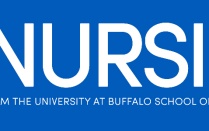A Holistic Approach to Patient Care
Behind the Scenes at the Bedside
Something old, something new: A marriage of existing resources and novel approaches.

Published September 1, 2015 This content is archived.
Often people envision nurses as the ubiquitous physical presence at the bedside, on units and clinic floors, and in examination rooms, community health centers, and encampments in war-torn or impoverished communities. They fulfill a gamut of roles, from prescriber to confidant, from health assessor to wiper of tears, from teacher to life sustaining force in the face of disaster. In any of these functions, the goal is ultimately the same – to deliver the best possible care.
There are nurses, however, who go largely unseen but whose mission is the very same. Nurse researchers like Assistant Professor Sharon Hewner, PhD, RN, with bedside experience in tow, aim to improve patient outcomes through innovation in research and data.
As Principal Investigator of the Coordinating Transitions Project, which has two years of funding (nearly $300,000) from the Agency for Healthcare Research and Quality (AHRQ)*, Hewner is guided by her knowledge of informatics and data science. The Coordinating Transitions team aims to improve patient outcomes and decrease hospital readmissions among patients with chronic illnesses by utilizing discharge alerts and establishing an understanding of a patient’s conditions and social and medical complexity across healthcare settings.
Working toward this end, the team created a Care Transitions Alert that uses already available data and technology in new ways. These include admissions, discharges and transfer (ADT) notifications collected by the clinical data repository (CDR) at HEALTHeLINK™, a regional health information organization (RHIO); Elmwood Health Center’s electronic health record and subscribe and notify list, which identifies patients who have provided consent for the primary care office to receive information about them; and the Cohort Table of 12 chronic conditions.
The Care Transitions Alert includes a flag and relative risk of readmission for disease categories, the reason for admission and patient contact information. The nurse care coordinator receives the alert via secure email within 24 hours of discharge, prompting her to make an outreach phone call to assess the needs of patients with a high risk of readmission, review medications and complete the Patient Centered Assessment Methodology (PCAM).
“If the nurse care coordinator calls someone within 72 hours of discharge, gets that person into the primary care office within two weeks and prevents readmission within the first 30 days postdischarge, then that office visit is eligible for an enhanced payment,” Hewner explains. “One of the really exciting things about this program is that it has the potential to be sustainable. If it’s successful, the initial visit can be reimbursed at a higher rate – it’s a way of paying for this new nurse care coordinator role.”
Using the cohort table, which is based on Hewner’s COMPLEXedex™ algorithm, the population is categorized into four complexity segments, 17 hierarchical disease categories and chronic disease cohorts based on 12 prevalent chronic conditions. A patient’s social complexity is assessed using the PCAM. Developed at the University of Minnesota (UM), this simple tool asks the nurse to rank a patient’s capabilities in terms of their health and well-being, social network, economic and other resources, and need for more care coordination or additional services.
“We’re working with UM closely to create a web-based electronic PCAM tool with a built-in scoring mechanism and problem identification that gives the nurse a sense of how urgently the patient is in need of additional services,” says Hewner.
Asking patients questions about their personal situation makes care person-centered and gives us an opportunity to ask what each patient needs. That is critical.
She also notes that although the PCAM is used frequently, it is rarely used systematically. “What’s different in our case is we’re directing the nurse using data mining to tell her who needs to be investigated more fully. That change, although it seems very simple, is critically important in building an informatics solution.”
Risk-stratified care management, Hewner explains, helps primary care nurses direct efforts more accurately and efficiently based on patient needs and comorbidities. The Care Transitions Alert system also streamlines the flow of information by increasing the accessibility of data at the hospital and ensuring that the primary care provider will receive the appropriate discharge information, resulting in more efficient and effective communication between acute and primary care. “It’s getting the right piece of information at the right time to the person who needs it so he or she can intervene immediately and provide what is needed to keep a person healthy,” says Hewner. “By opening this line of communication, we’re seeing a change in how both the patients and practice respond.
“Nurses at every level have the opportunity to bring the patient front and center and improve the health of populations if we listen to the data and tap into it in meaningful ways – it can really help us to visualize how we form our research and practice in order to be more efficient and effective.”
- SARAH GOLDTHRITE
*This project was supported by grant number R21HS022575 from the Agency for Healthcare Research and Quality. The content is solely the responsibility of the authors and does not necessarily represent the official views of the Agency for Healthcare Research and Quality.
Read More UBNursing
Current Issue
Past Issues
We want to hear from our incredible alumni. Whether you live in Western New York or anywhere else in the world, stay in touch! Send us a class note.

